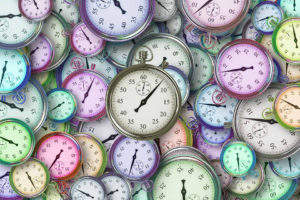 A question that comes up fairly regularly in the mailbox here at IU is whether or not authors can use brand names and place names in their novels. The answer is, unequivocally, yes. Ever heard of a book called, The Devil Wears Prada? Or the novel Sex and the City, which, like the TV show that came after, spoke endlessly of name brands?
A question that comes up fairly regularly in the mailbox here at IU is whether or not authors can use brand names and place names in their novels. The answer is, unequivocally, yes. Ever heard of a book called, The Devil Wears Prada? Or the novel Sex and the City, which, like the TV show that came after, spoke endlessly of name brands?
Now, yes is the simple answer. But it’s more nuanced than just yes. Generally, if you have a contemporary novel, written in the real world, people are going to exist in it. They are going to go real places. If they live in Washington, DC, they may look out their window and see the Washington Monument. They may visit a Panera Bread while listening to Cardi-B and wearing their Christian Louboutin red bottoms. They may even gawk at the tourists who pass by on a DC Duck Tour. And they should. Because these are all real things that can enrich the novel for readers and really set them in the place. Your characters are going to wear clothes and shoes and eat at restaurants. If they’re like most of us, they’re going to have sneakers that are a common brand: Nike, Adidas, Under Armour. That’s fine to do.
The reason people worry about using name brands and sometimes locations is because they are concerned they will be somehow be sued. Continue reading “Using Real Places, Products in Your Novel? Name, But Don’t Defame”

 From the IU mailbox:
From the IU mailbox: My favorite saying about indie publishing is, “The only constant is change.” There’s no such thing as a long-term, set it and forget it marketing system that will continue to work to sell books year after year. I’ve employed half a dozen different primary strategies (and dozens of minor ones) over the last six years to market my books, and I have no doubt I’ll be adding more this year. We have to be like sharks — never sleeping, but constantly moving forward.
My favorite saying about indie publishing is, “The only constant is change.” There’s no such thing as a long-term, set it and forget it marketing system that will continue to work to sell books year after year. I’ve employed half a dozen different primary strategies (and dozens of minor ones) over the last six years to market my books, and I have no doubt I’ll be adding more this year. We have to be like sharks — never sleeping, but constantly moving forward. It’s hard enough to write about a place you know well. What do you do when your story takes place somewhere you’ve never been?
It’s hard enough to write about a place you know well. What do you do when your story takes place somewhere you’ve never been?